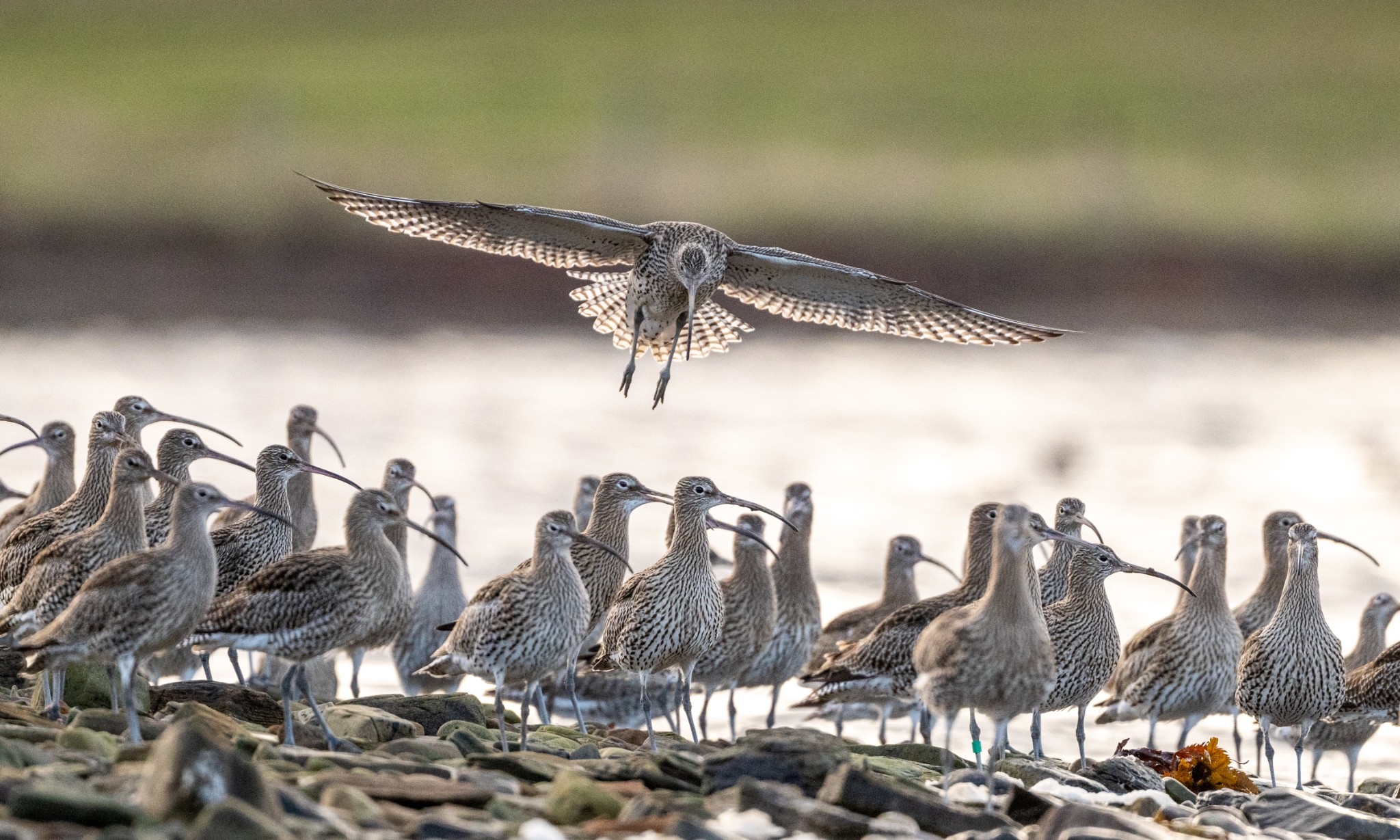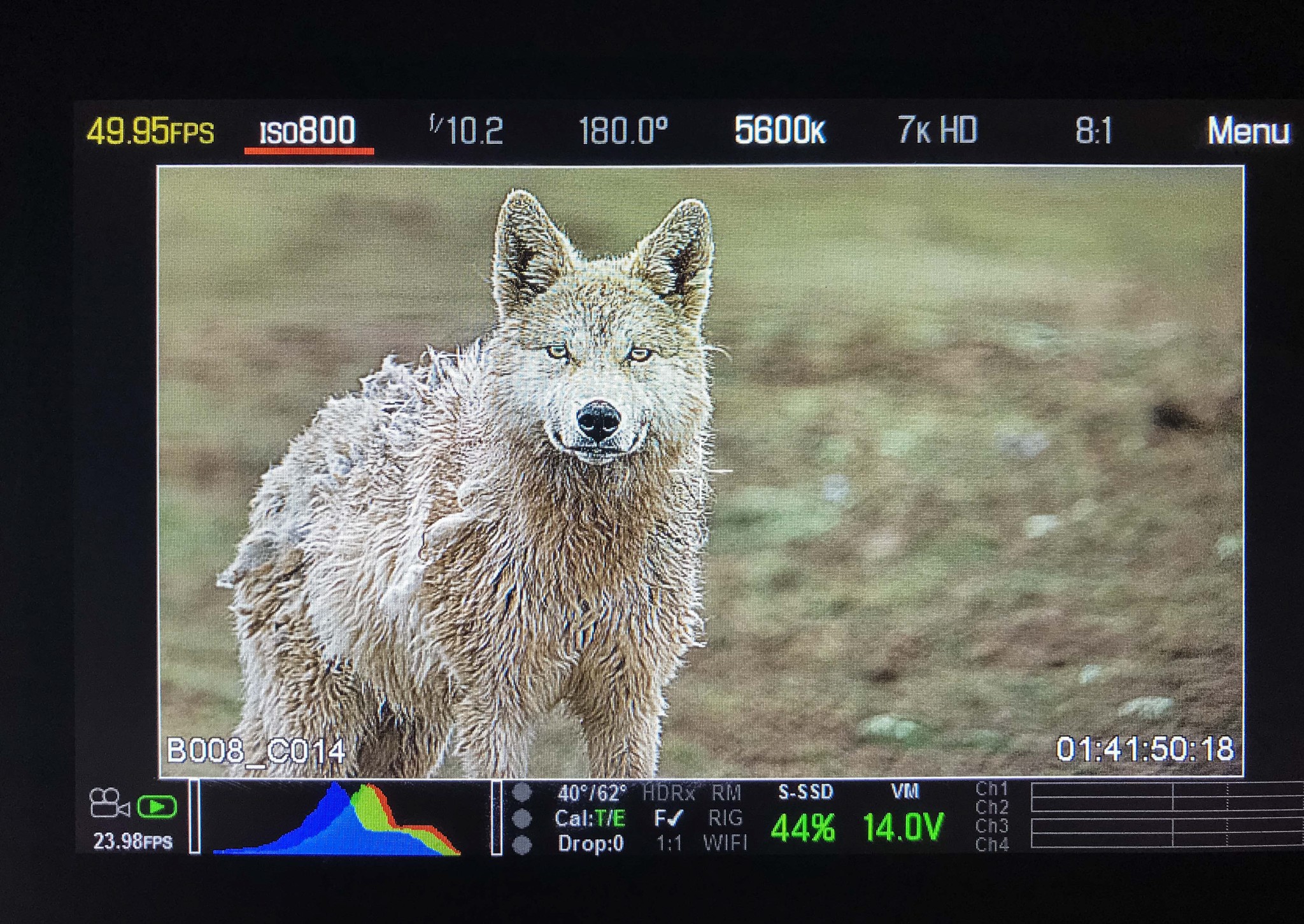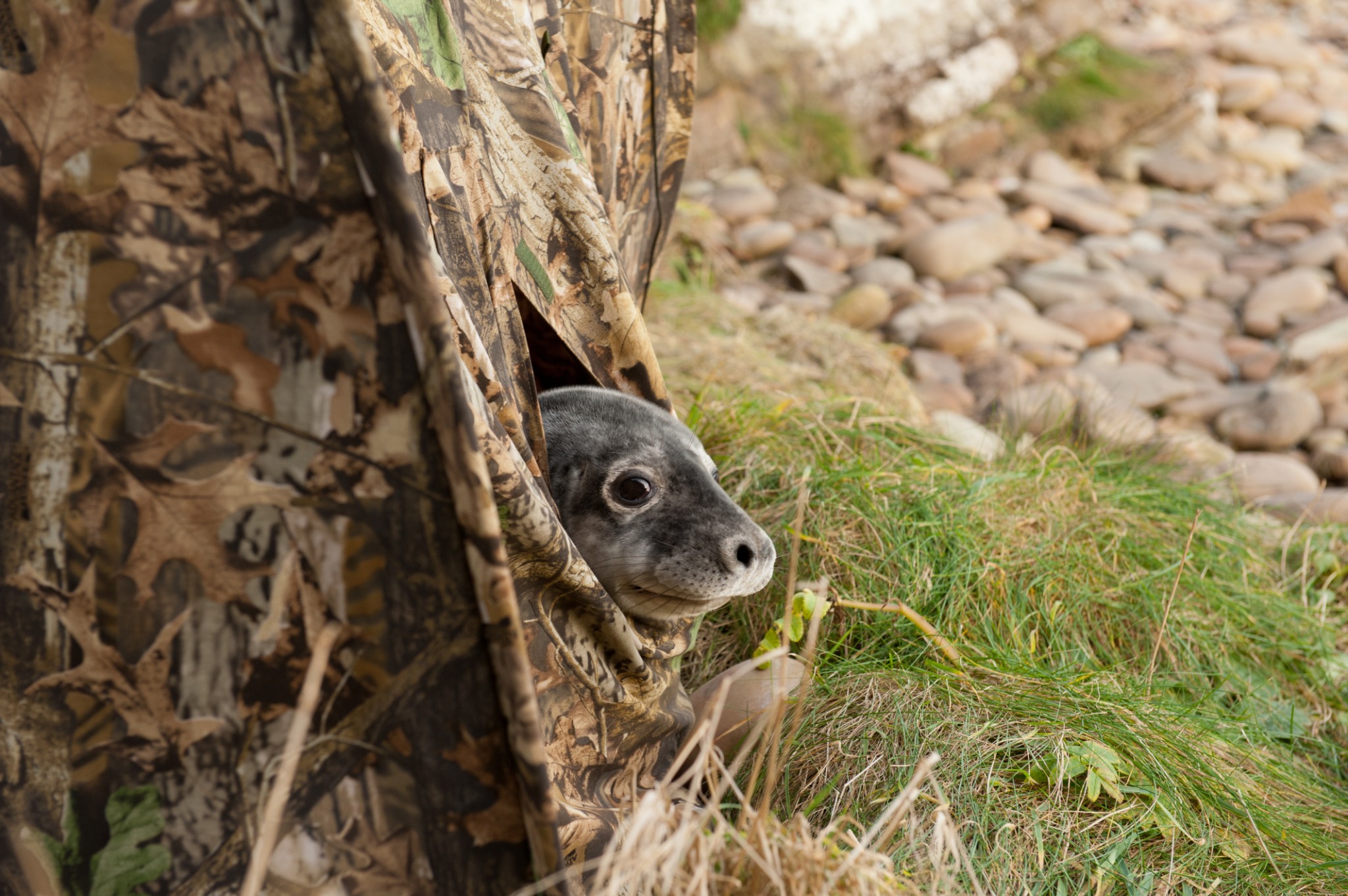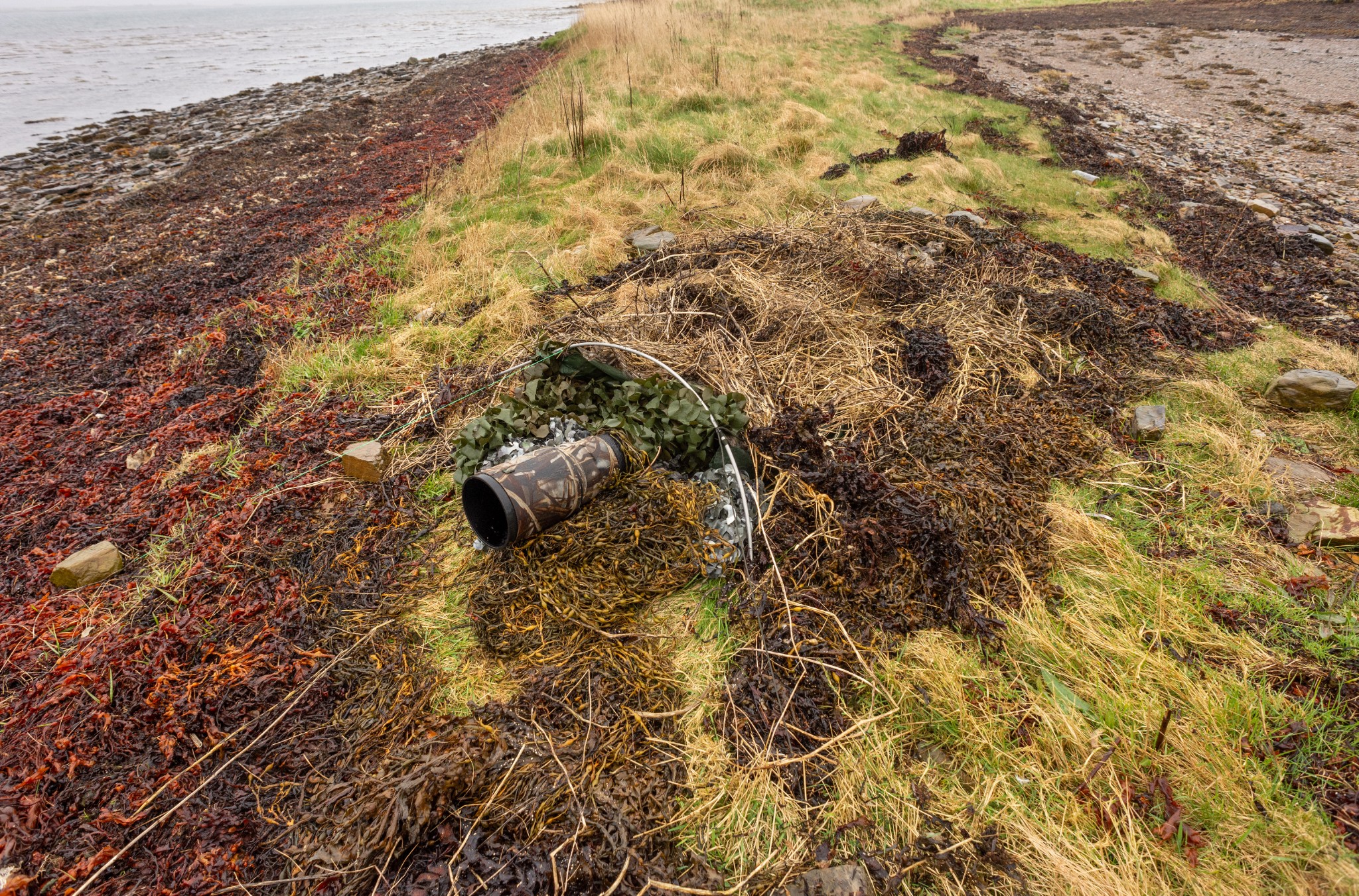I recently tried out a new hide for wildlife photography which has the rather grandiose name of the ‘Tragopan Hokki V3’ and is quite possibly the poshest hide I’ve ever owned.
I often think though that what one hide has over another is just a slight notch up on the ladder from your previous level of discomfort. Working from mobile hides isn’t for everyone but depending on what it is you’re trying to photograph or film then at times it’s essential and the only way that you’re likely to be able to photograph your subject without disturbing it. That was the case on this occasion as I tried to get some shots of curlew, which are exceptionally wary wading birds.
The Hokki hide, or ‘blind’ to our North American friends, is a low profile hide (but not the lowest as we shall see). It’s about six to eight feet long and almost like a long, low tent, with an umbrella-shaped frame to raise the shape at the front to allow for better movement. The front has a small awning to keep the worst of any rain off the lens, which pokes through some camouflaged scrim netting. One of the things I like about it is you open it up from the side with a zip. This might sound obvious but some hides simply have shoelace style ties at the entry side of the hide and if it’s cold and windy you will certainly feel it. This cylindrical-style hide does mean that you have to lie down on your front so if you have a bad back it won’t be long before you’re uncomfortable. I did however use a blow-up camping matt to lie on which helped a good deal.
Having worked in hides for both filming assignments and photography closer to home for the best part of 15 years I thought I would share some of my more memorable experiences - the good, the bad and, not so much ugly, but definitely uncomfortable. There’s that word again - if they’re so uncomfortable then why bother using them, I hear you ask. Essentially, we set up a hide in order to photograph a species that wouldn’t otherwise tolerate a human presence near it.
That doesn’t mean however that we can simply plonk our chosen hide wherever we want and be guaranteed good results. There’s lots to think about before we even put it into place. The first thing to consider is simply what kind of hide do I want to use and is it suitable for the job. Like every product in life, no two designs are the same, and that goes for quality too. I sometimes think no one has produced the perfect photography hide and there is always a compromise of some sort to allow one design feature to shine.
So, let’s start with the most basic, a pop-up hide. This is exactly what it says on the tin, where the fabric of the hide is attached to the frame and allows you to put it up much like opening an umbrella. The pros are its very quick and convenient to erect and the cons are they are often lightweight and made with some kind of semi-waterproof material that flaps in the wind.
This is one of the reasons why I prefer canvas hides, as they rustle less in the wind and are more robust. Often the species we are interested in is more sensitive to disturbance than others and so a hide flapping in the wind and making a lot of noise can lead to spooking the bird or animal. This is definitely a consideration for me working in Orkney, especially during the winter.
I have used a pop-up hide once before whilst filming, and in some quite extreme conditions, at 15,000ft up on the Tibetan Plateau.
My fellow cinematographer was from the United States and so brought his own hides with him. It was very roomy inside, not something I can often say about mobile hides, and had a more angular shape with multiple windows. The downside to this was that the windows were a triangular shape which made filming awkward. In my opinion photography from hides is much easier than filming, you’re generally handling much smaller and lighter kit and just less of it. If the hide is too small then my long, heavy tripod legs might even touch the sides. If it’s windy that vibration will make its way all the way up the legs and you’ll see the movement in camera.
What I did realise though is that because this hide was a North American brand it was designed for shooting of a different kind, where the end result for the creature was very different from my intent, hence the multiple windows and their odd shape. However, I had one of the best wildlife experiences of my life in that hide. I was there to film the chiru migration. Chiru are antelope that come out of the mountains en-masse and go down onto the plateau to give birth over the course of a few weeks. Where there’s ‘food’ of course there are predators and the plateau was no different, Wolves were there to take advantage of the new antelopes being born.
Really you want to use a hide in conjunction with some other kind of cover, be it trees, or backed against a wall or bush just to break up the shape a little. Just because the material is camouflaged doesn’t mean that a five-foot-high structure doesn’t stick out like a sore thumb, especially somewhere flat like the plateau. I heard the radio crackle and looked up and there on the horizon was a wolf perhaps 100 meters away.
It started trotting towards me and I could see that it was almost white and looked like it was moulting its shaggy coat. My heart was beating hard and my hands shaking as I tried to follow it and keep it in focus as I filmed. The wolf stopped ten metres in front of the hide and I could see its head moving from side to side, trying to see inside the hide, wondering what this odd thing in its environment was. Then, it sat down and started grooming itself. Once it has sated its curiosity it simply upped and left.
I count myself very fortunate to have had such an encounter with possibly the most vilified creature on earth. Nobody believes me when I say this but that day in the hide, I was reading a book by Scottish nature writer Jim Crumley entitled ‘The Last Wolf’. That is another significant factor for me when filming, how to curb boredom. On that shoot as the birthing season came to an end, the chiru in front of my lens became much less frequent and so I stared out onto nothing for days on end whilst sitting in there for up to 14 hours straight.
I try not to give in to distraction like a phone, music or even books, and the fear of missing something is usually enough for me to stick to the plan. Staying warm and dry, and having more food and drink than you think you’ll need will keep you there longer than you think you’re capable of.
Very simple things can test the best laid plans. All of my hides are of the canvas variety whose structure is provided by tent poles. These can be difficult to bend properly and often shear. Unless you have a spare that’s it over until you can find a replacement. When photographing a red-throated diver at its nest site many years ago I set up only to find where I wanted to be was essentially just peat floating on top of water, and so there was no purchase for my pegs.
It was in one such of these canvas hides that I had probably the most bizarre hide encounter I’ve had. I was filming the grey seal pupping season here in Orkney and came down to my hide one morning to find it bulging on one side. ‘Very odd’, I thought, and on opening the hide imagine my surprise to find a young seal fast asleep inside! It was very relaxed and when it poked its head out of the filming window, I couldn’t help but laugh.
The last hide I’ve used is also the most uncomfortable and is called the bivvi hide. Really, it’s just a lightweight bag with a semi-circle tent pole to give it some structure. But you’ll see from the picture how concealed I am, with no outline on the sky and camouflaged with seaweed and grass.
Despite the discomfort it was really successful, waders and wildfowl, two of the most difficult bird groups to get close to, had no idea I was there. The last thing to consider now that you’ve hopefully put your hide in such a way that it’s not intrusive and the birds or animals have accepted it is to consider how you’re going to get out again!
There’s no point putting all that effort in only to leave the hide when the birds are close to it. It may be that you have to wait for the tide to recede for the birds to leave, for example. As much as I complain now thinking back on these experiences, they are often the best experiences, close encounters with some of our most special creatures.
I just need to figure out ways to keep climbing away from the bottom rungs of the discomfort ladder.
Find out more about Raymond’s work via his official website. You can also find him on Facebook, Twitter and Instagram.





